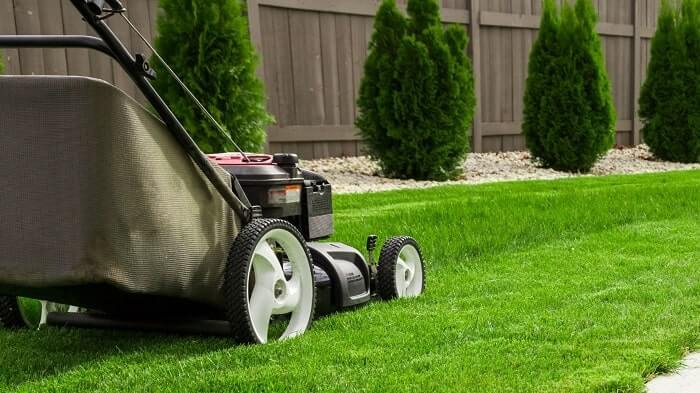Landscape maintenance isn’t just about a lush green lawn. It adds value to your property, promotes healthy air and soil, supports wildlife, and protects against flooding, drought, or storm damage.
Having the right landscaping can also make your yard easier to maintain. These landscape repair and maintenance tips will help you keep your yard looking great.
Weed Control
Weed control is a crucial aspect of any lawn care routine. If left untreated, weeds can grow and choke out desirable plants. Additionally, weeds can draw attention away from the beauty of landscaped areas.
Professional weed control services use pre- and post-emergent herbicides to target unwanted growth and stop it. This prevents weeds from germinating and quickly destroying mulch beds, lawns, and garden areas.
Many people spend significant time in their yards or gardens. Families enjoy practising sports, drawing chalk drawings on the sidewalk and grilling on the patio. However, a weedy yard can make these activities more difficult and uncomfortable.
Weeds can produce large quantities of pollen and heavy dust that can irritate the respiratory tract. This is particularly problematic for individuals with asthma, bronchitis or other lung conditions. In addition, weeds can be carriers of parasites and diseases that can impact human health.
Pruning
To do landscape repair in Fort Wayne IN, trees and shrubs in your landscape design must be trimmed regularly to keep them looking their best. This duty is best left to specialists but is a necessary element of property maintenance.
Proper pruning can help prevent insect and disease problems. It also encourages flower and fruit production. It removes dead or damaged branches and shears some shrubs into desired garden forms. Clears limbs hanging over homes, sidewalks, driveways, and parking areas where they could fall and damage people or property. It also keeps wayward branches from interfering with power lines and street lights.
The dormant season is the ideal time to prune most varieties of plants. Some shrubs and evergreens should be pruned right after blooming since their flowers are based on wood produced that year. These include azalea, rhododendron, mountain laurel, and forsythia. Others, like lilacs, roses, and chokeberries, should be pruned in early spring before new growth begins.

Forestry Mulching
Forestry mulching is an eco-friendly land clearing and vegetation management method that utilizes specialized equipment known as mulchers or forestry mulching machines. These machines are designed to efficiently and selectively clear vegetation, including trees, shrubs, and underbrush, while simultaneously mulching the debris into fine wood chips.
- Efficient Vegetation Clearing: Forestry mulching is a highly efficient method for clearing overgrown or densely vegetated areas, making it ideal for land development and conservation efforts.
- Selective Clearing and Erosion Control: It allows for the selective removal of unwanted vegetation while preserving desirable trees and plants, all while controlling soil erosion through mulch production.
- Environmental Benefits: Forestry mulching is an eco-friendly approach that reduces carbon emissions, promotes soil health, and enhances wildlife habitat, making it a sustainable land management solution.
Anyone can enhance the health and aesthetics of their landscape with professional Forestry Mulching in Clifton VA.
Fertilization
Many landscape plants need supplemental fertilizer to thrive. However, too much can harm your lawn and other vegetation by overstimulating growth. A soil test can assist you in determining the nutrients required and recommending a treatment based on your soil conditions.
The fertilizer’s kind and timing of application are critical. For example, warm-season grasses like Zoysia and Bermuda should be fertilized in spring, while cool-season grasses are best fertilized in late summer to fall.
Soil amendments help improve the soil structure and increase water-holding capacity, reducing the need to rinse as often. In addition, they can add valuable organic matter and enhance microbial activity.
Avoid nutrient run-off into the surface or groundwater using organic and slow-release fertilizers. These fertilizers release the nutrients over time, preventing overfeeding and stress. If you are still determining the best fertilizer for your landscape. Also, pay attention to the physical characteristics of the fertilizer; a uniform particle size helps ensure more even distribution when applied to turf.
Watering
Whether trimmed or wilted, damaged lawns, trees, bushes, and plants should be fixed immediately. It’s also essential to keep your garden watered properly.
Generally, lawns need about one inch of water each week from rain or an irrigation system. Weekly soakings promote stronger, deeper roots than frequent, shallow waterings that can cause thatch and attract chinch bugs.
As fall approaches, it’s a good idea to get your landscape in shape before the frost arrives. This includes raking up leaves and removing debris like tree limbs, rocks, and trash from the yard. Wet leaves smother grass and can harbor diseases and outdoor pests, making them an ideal environment for weeds and other unwanted vegetation. This is also the perfect opportunity to familiarize a local landscaping specialist with your design. That way, if you ever need to engage someone at the last minute, they will already be familiar with your property’s special demands and issues.


